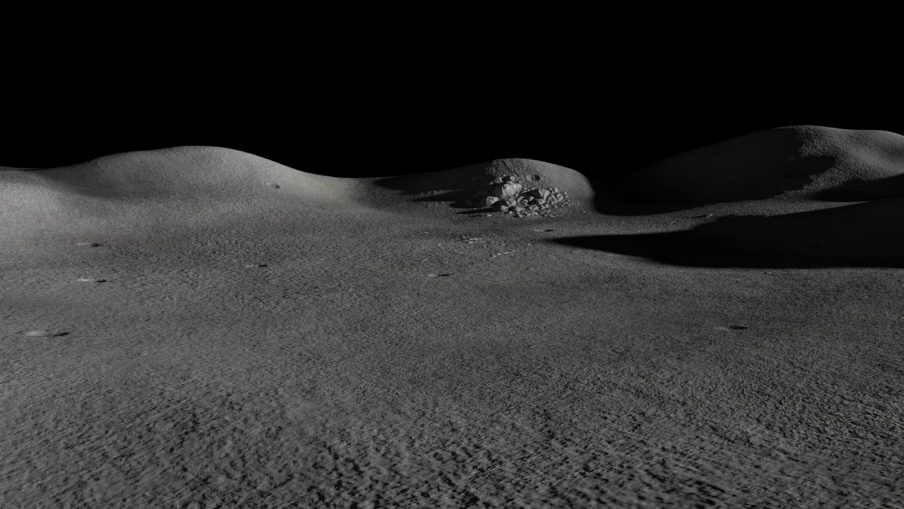
Backstory: The Story Behind A Truth Stranger Than Fiction
WARNING: This entry contains spoilers about the novel A Truth Stranger Than Fiction. Continue reading at your own risk!
 Most of my mystery novels, and my fiction in general, start from a kernel of an idea, a factoid, an image.
Most of my mystery novels, and my fiction in general, start from a kernel of an idea, a factoid, an image.
I see or hear something that piques my interest, but whatever it is I sense it’s just the tip of the iceberg; there’s a story there. At this point I file it away (usually writing it down, of course), forget about it and move on with whatever I’m currently writing.
Sometime during the winter of 2006-07, I saw a documentary about the moon that discussed the existence of the isotope Helium-3 embedded in the moon’s soil, or regolith, and how then-President Bush (“Dubya”) had vowed years earlier to send us back to the moon, ostensibly to colonize it and begin mining the Helium-3 for nuclear fusion energy production back on Earth.
 (NOTE: Because this piece is about the story behind the novel, I won’t be going into the science of Helium-3 fusion. If that’s something that interests you, you can view a page of the Helium-3 resources I consulted, or you can listen to several interviews I gave about the book, or you can read a previous blog entry.)
(NOTE: Because this piece is about the story behind the novel, I won’t be going into the science of Helium-3 fusion. If that’s something that interests you, you can view a page of the Helium-3 resources I consulted, or you can listen to several interviews I gave about the book, or you can read a previous blog entry.)
As I said at the opening of this piece, most of my fiction begins with an idea, a factoid, an image. Novelist Vladimir Nabokov suggested that novelists were like birds building nests—gathering twigs and string and bits of fluff—and that it was unclear whether the bird visualized ahead of time the nest it was going to build.
But I don’t think birds building nests is the right analogy for novelists; birds generally gather their materials and begin nest-building immediately; novelists tend to gather their materials over years, and speaking for myself, I think of myself as more akin to the junk collector-cum-inventor in the original Mad Max films—I collect interesting things, things that I sense will be useful down the road, things that can be combined with other interesting things to create something new and special.
 Subconsciously I suppose (because a “plot” for A Truth Stranger Than Fiction was not in my consciousness), after seeing the moon documentary in the winter of 2006-07, I began my collecting, but I didn’t write a first draft of the novel until 2013. By then, however, I was brimming over with interesting ideas, factoids and images that I’d collected. Here, in no particular order, are a few that I’d filed away over those six years:
Subconsciously I suppose (because a “plot” for A Truth Stranger Than Fiction was not in my consciousness), after seeing the moon documentary in the winter of 2006-07, I began my collecting, but I didn’t write a first draft of the novel until 2013. By then, however, I was brimming over with interesting ideas, factoids and images that I’d collected. Here, in no particular order, are a few that I’d filed away over those six years:
- The phenomenon of “fangirls,” and particularly women readers who fall in love with authors.
- Katy Perry’s cotton candy pink-and-blue hair for her California Gurls album.
- The discovery of the Bakken Formation in North Dakota and Montana, and the use of fracking technology to extract oil and natural gas from shale.
- The low cost of modern GPS transceivers.
- A remark by a friend in advertising who, upon returning to the U.S. from China, said, “They love Kentucky Fried Chicken over there.”
- A favorite scene in Clint Eastwood’s Dirty Harry, when he’s on the rooftop working the bolt on a Weatherby .458 magnum and says to his partner, “When I say now, you hit him with the light.”
- The popularity of the fast-food chain Shake Shack—especially its original location in Madison Square Park in Manhattan.
- The joy of being in Paris with someone you love, and the sense that you haven’t truly lived until you while away several hours in a café.
- And, finally, being in the vestibule between two Amtrak train cars, observing what a dangerous space it really is (lots of spaces and sliding metal parts that can shear off fingers), and noting to yourself that, so far as you know, in all of mystery and thriller literature and movies, there has never been a fight scene in a train vestibule; on a train, yes, there have been many (e.g., From Russia with Love, The Spy Who Loved Me and, more recently, Spectre), but never a train vestibule.
Of course when I wrote the first draft, not all of the above ideas, factoids and images appeared. In fact, the fracking detail didn’t get onto the page until the third draft or so, when I was stuck as to how the Helium-3 idea connected to the rest of the book.
So there you have it: something of the story behind A Truth Stranger Than Fiction. But the novel itself is far better than my description of it.
My description of it is like “a guy who knows the guy”; the novel itself is “the guy.”
Which one would you rather meet?
I thought so. If you haven’t read the novel already, you can go to this page to read a sample, or click on one of the links there to simply buy it.
Comments (0)